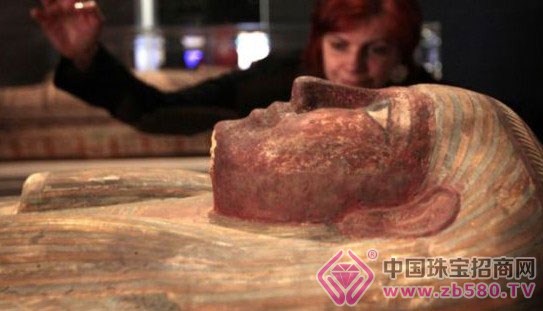
Scientists have used modern technology to unveil the mystery of the Egyptian mummies that have been on display at an important exhibition at the National Museum of Scotland for thousands of years. Scientists used advanced scanning techniques to scan the mummies of a woman and a young girl and found that jewelry was hidden under the wrap.
They also said that they intend to study the DNA of two mummies to see if they are kinship. The exhibition will begin this weekend and will continue until May 27. The exhibits include mummies and other items from the National Museum of Scotland and the National Museum of Ancient Civilizations in Leiden, the Netherlands, dating back 6,000 years. The exhibition was divided into two parts, the first part focusing on the rituals surrounding death and rebirth. The second part looks at how the Egyptian methods of death have been studied over the past few centuries.
Exquisitely patterned coffins, amulets, jewellery, papyrus, anti-corrosion equipment and decorations are some of the many items that the show used to show how the process of making mummies has changed over the centuries. The exhibition will be held in a space built for a specific purpose, which was built during the renovation of the Edinburgh Museum last July. As this space expands, the museum has been able to showcase the collections that generations have never seen before. The area where the mummies and a series of coffins are placed is designed like a tunnel in a pyramid and a grave to evoke public reveries and create a horror atmosphere.
Scientists have done a non-invasive study of these mummies with new scientific breakthroughs, including the Rhend mummy owned by the museum. The mummies, named after Alexander Rand, which brought it to Europe, have never been opened. Jim Tart, head of cultural relics protection at the museum, said scientists at the University of Liverpool, who used advanced technology to scan the mummies, had determined that the young woman had a gold amulet in the wrap and made an identical replica. He explained: "In 1857, people dug her out in Thebes and brought it back to Edinburgh. Rand studied with advanced technology and did not open her wrap."
Scientists now intend to use nuclear DNA tests to determine whether the woman and the little girl are relatives. Dr. Gordon Lintor, head of the National Museum of Scotland, said: "This is the first important exhibition in Egypt in Edinburgh in 30 years. It is a precious collection of the National Museum and the people from the past. The only opportunity for our own collections that we have not seen. These collections come from the same sources in the early and mid-19th centuries, when people were keen to explore, find and collect what they got from Egypt and then bring them back to the motherland. I have always been interested in Egypt, whether it is children who are more interested in the more horrible side of the mummies, or adults who want a look at the beauty of mummified decorations. There is something everyone wants to see."
The Scottish traveler Alexander Henry-Lint in the mid-19th century was one of the first collectors to record their findings scientifically. The Edinburgh exhibition has been carefully planned for two years and will be extended from the Scottish capital to six locations in Spain later this year.
Ladies'Shirt,Custom Ladies' Striped Shirt,Spandex Long Sleeve Shirt,Green Stripe Spandex Shirt
SHAOXING GUANGQI TRADING CO.,LTD , https://www.sxgqtrading.com
![<?echo $_SERVER['SERVER_NAME'];?>](/template/twentyseventeen/skin/images/header.jpg)